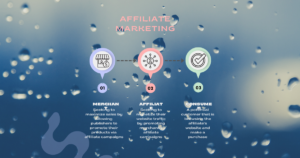What is PLR
Private Label Rights (PLR) refer to a licensing agreement where the creator of a product grants the buyer the right to use, modify, and often rebrand the product as their own. PLR products can include various digital content such as articles, ebooks, videos, and software. The buyer is typically allowed to sell or distribute the modified product under their brand.
PLR material is generated by someone else and sold with the right to edit, brand, and use it as your own, making it a flexible option for content creation and marketing purpose.
Let’s delve into the details to understand the pros, cons, and applications of PLR.
Definition and Use
PLR grants individuals the right to republish, reproduce, or modify a piece of content as their own. This licensing model has evolved to cover various assets, including documents, videos, templates, and more. By purchasing PLR, users gain the flexibility to use the content according to their needs.
Pros and Cons
Pros:
- Time Efficiency: PLR content can save significant time in content creation, enabling quick deployment of materials.
- Cost-Effective: Compared to hiring a content creator, purchasing PLR can be more budget-friendly.
- Customization: Users have the freedom to modify and personalize the content to align with their brand.
Cons:
- Lack of Uniqueness: Since multiple buyers can acquire the same PLR content, it may lack originality.
- Quality Varies: The quality of PLR content can be inconsistent, requiring careful selection from reputable sources.
- Limited Exclusivity: PLR often doesn’t provide exclusive rights, limiting its exclusivity.
PLR in Practice

PLR finds applications in various industries, such as online course creation, digital marketing, and product development. Entrepreneurs can leverage PLR to kickstart projects, generate leads, or enhance existing products.
List of what you can do with your PLR Products
1 Sell on Your Website or Blog: Establish a niche website or blog and market PLR products related to your theme. Augment income by incorporating affiliate links or ads.
2 Utilize Online Marketplaces: List PLR products on platforms like eBay, Amazon, Etsy, or Shopify. Alternatively, set up your online store using tools such as WooCommerce or Shopify.
3 Create Unique Products: Modify, combine, or rebrand PLR products to craft distinctive offerings. Infuse your voice, style, or personality to enhance appeal. Sell these creations on your website, blog, or online marketplaces.
4 Use as Lead Magnets: Offer PLR products as free incentives to encourage email list sign-ups. Follow up with valuable content, offers, or recommendations through email marketing.
5 Content Marketing: Leverage PLR products across various channels—website, blog, social media, podcast, video, or newsletter. Repurpose content into different formats for broader reach.
PLR Websites
PLR.Me
IDPLR
PLR Database
PLRMines
Unstopable PLR
Free PLR Downloads
Big Products Store
Download PLR Products
PLR Products
Resell Rights Weekly
Conclusion
Understanding PLR empowers content creators and entrepreneurs to make informed decisions about integrating pre-made content into their strategies. While it offers efficiency and cost benefits, careful consideration of quality and uniqueness is essential.



